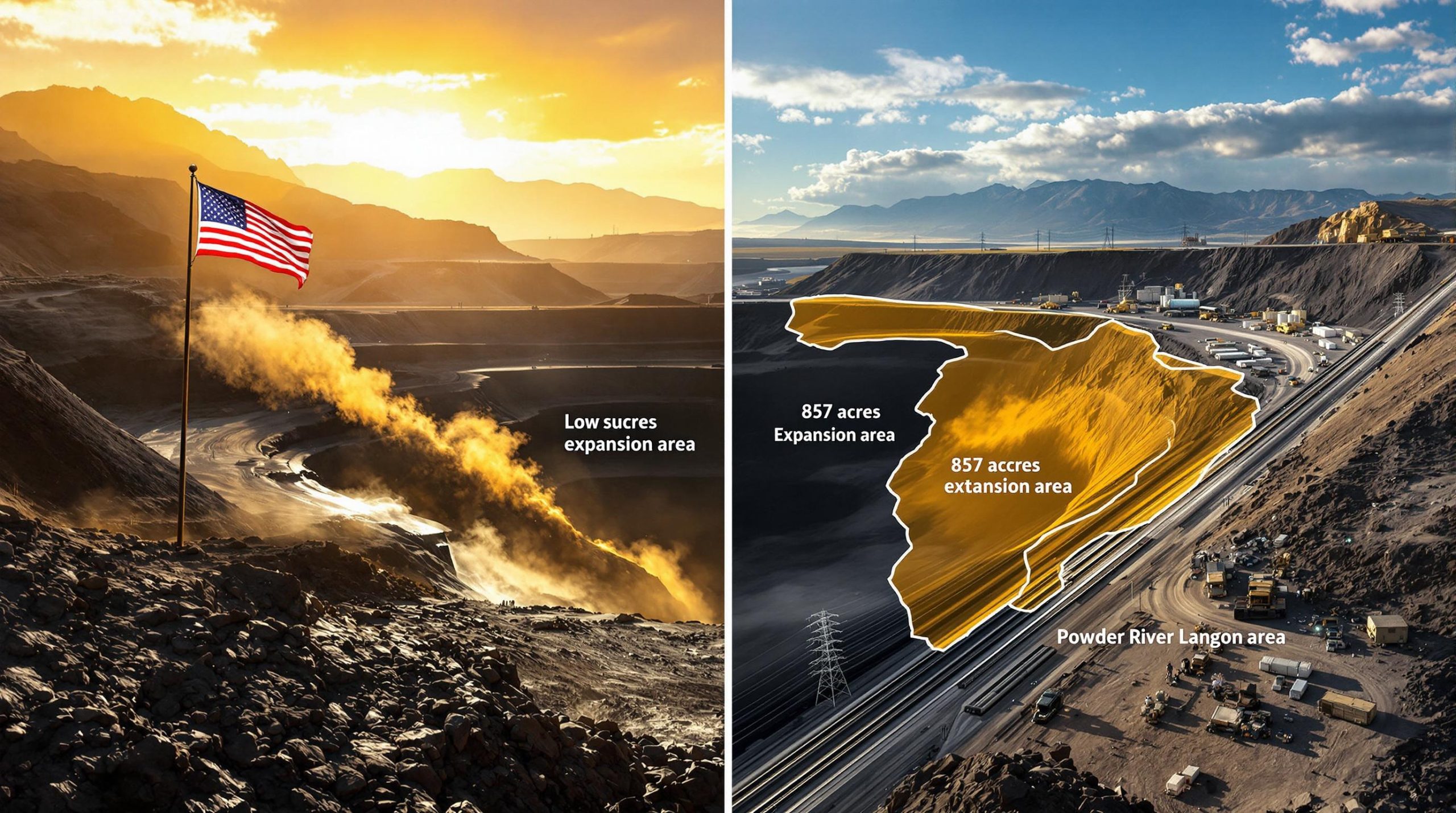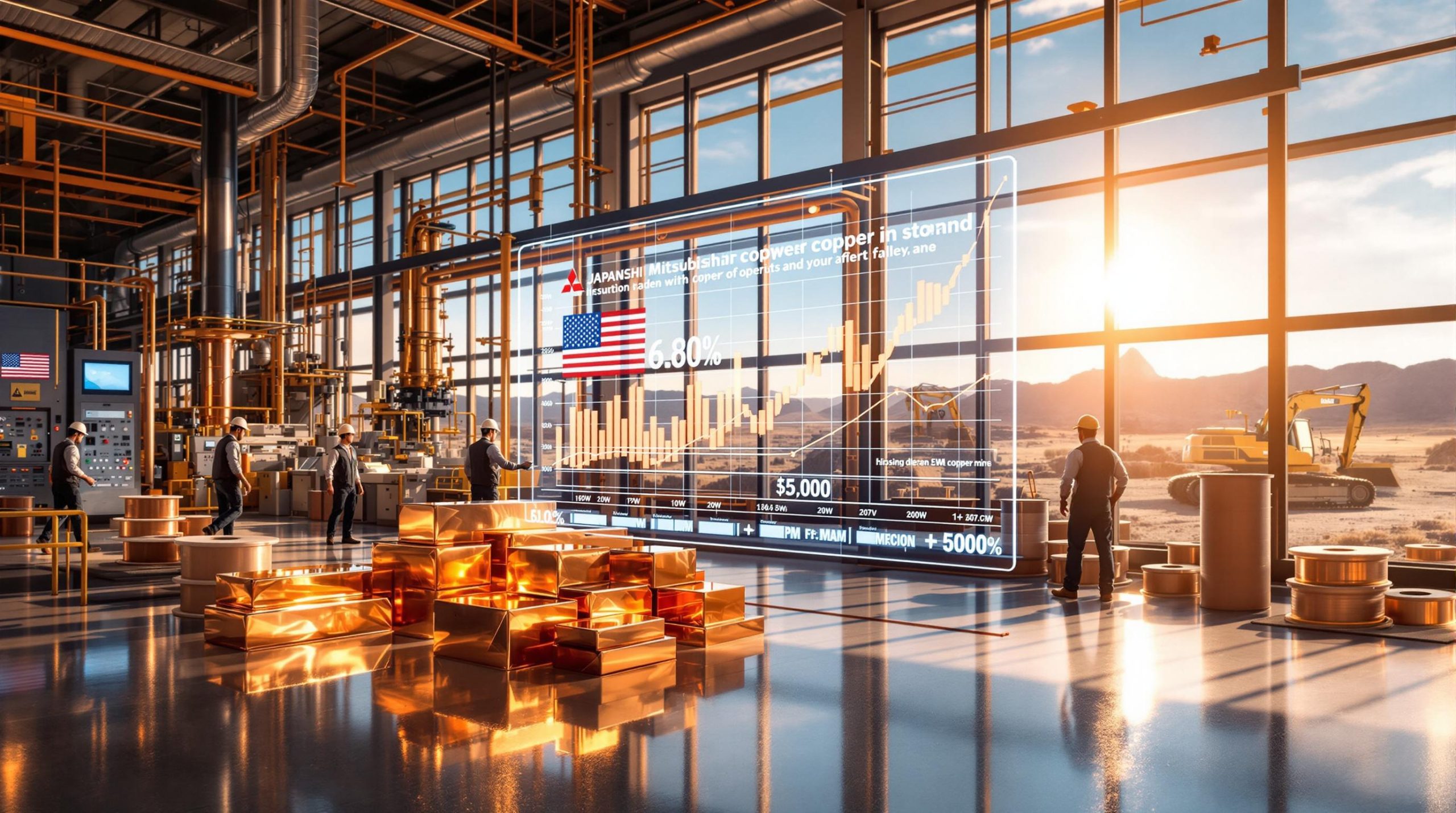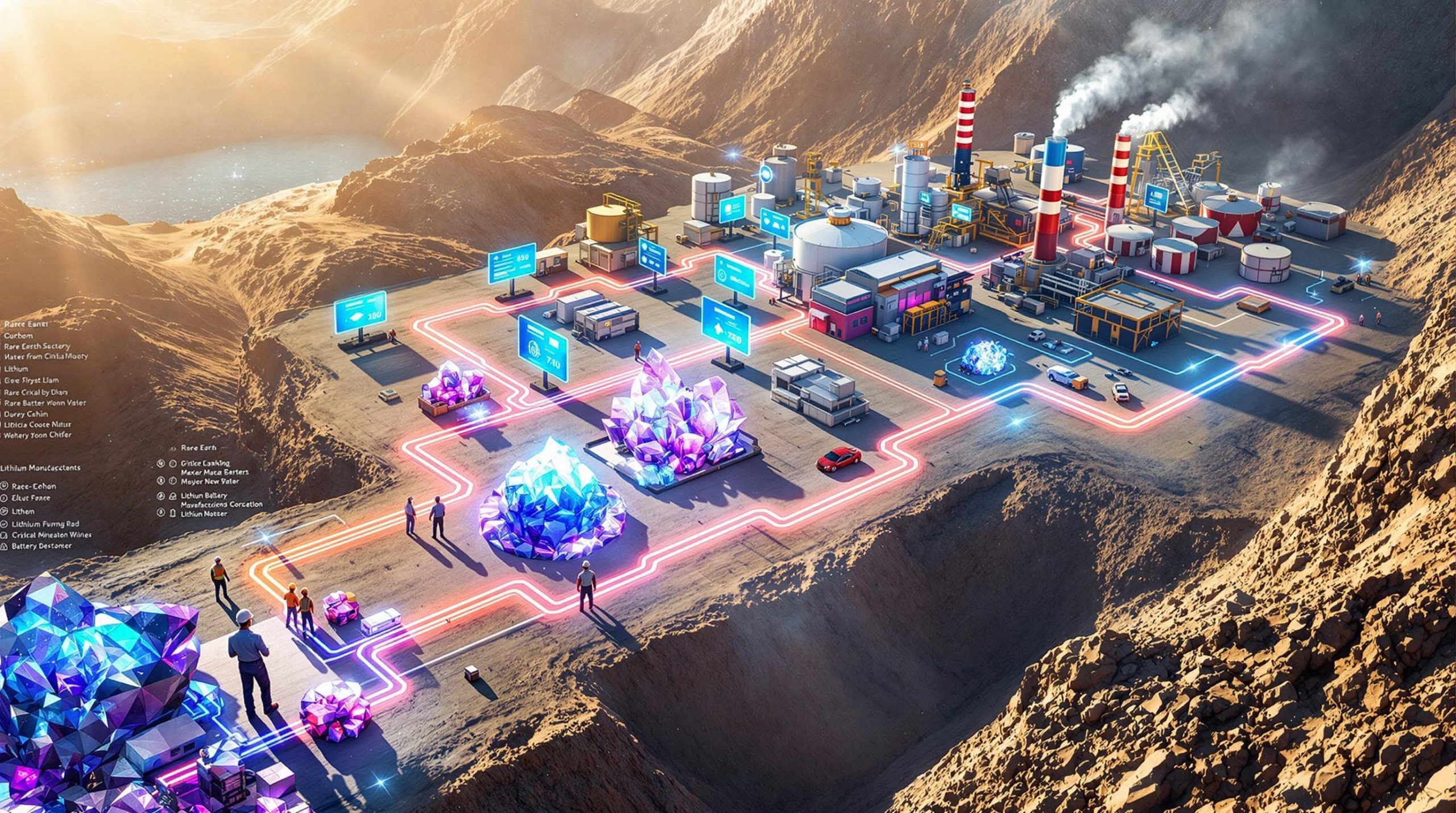What Is Sovereign Metals' Kasiya Project and Why Is It Significant?
The Kasiya project in Malawi represents one of the world's most significant mineral discoveries in recent decades, establishing itself as a world-class resource with critical importance for global supply chains. Located in central Malawi, this massive deposit contains an extraordinary Mineral Resource Estimate of 1.8 billion tonnes at 1.01% rutile and 1.32% graphite, making it both the world's largest natural rutile deposit and a substantial graphite resource.
What makes Kasiya particularly significant is its dual-commodity nature, providing essential materials for two rapidly growing industries: titanium dioxide production and battery manufacturing. The scale of the resource—approximately 18 million tonnes of rutile and 24 million tonnes of graphite—positions Sovereign Metals as a potential cornerstone supplier in both markets for decades to come.
The project's strategic importance extends beyond its sheer size. As Malawi's President Lazarus Chakwera told the UN General Assembly in 2022, "The recent discovery in Malawi of the largest deposit of rutile in the world means that Malawi's economic rise is imminent." This presidential endorsement highlights Kasiya's potential to transform Malawi's economy while providing critical minerals and energy transition resources essential for global manufacturing and clean energy transitions.
How Did Sovereign Metals Discover the World's Largest Rutile Deposit?
The Groundbreaking 2019 Discovery
Sovereign Metals made history in 2019 when exploration efforts in central Malawi uncovered what would prove to be the first significant rutile-dominant deposit discovered globally in over 70 years. The company's technical team identified unusual mineral signatures in soil samples that warranted further investigation, ultimately leading to this landmark discovery.
What makes this find particularly remarkable is its timing amid growing global concern about critical mineral supply chains. As Dr. Julian Stephens, Sovereign's lead geologist noted, "Kasiya's paleochannel system defied traditional exploration models," which explains why such a massive deposit remained undiscovered for so long despite being relatively close to the surface.
Geological Uniqueness of the Kasiya Deposit
The Kasiya deposit features a distinctive geological profile hosted within Cretaceous-aged sandstone formations unique to the Chilwa Alkaline Province. Unlike many titanium deposits worldwide that are ilmenite-dominant, Kasiya's mineralogy is primarily rutile—the highest-grade, most valuable form of titanium dioxide.
What makes the geology particularly advantageous is the deposit's:
- Shallow depth: Mineralization begins near surface and extends to approximately 25 meters
- Consistent grade: Remarkably uniform rutile and graphite distribution throughout the deposit
- Soft host material: Easily mineable without blasting, significantly reducing extraction costs
- Extensive lateral spread: Covers an area of approximately 201 square kilometers
These geological characteristics contribute to both the deposit's extraordinary scale and its economic viability.
Comparative Scale in Global Context
When placed in global context, Kasiya's dominance becomes clear. Its 18 million tonne rutile resource significantly surpasses the second-largest deposit, Sierra Rutile in Sierra Leone, which holds approximately 8.1 million tonnes. This positions Sovereign Metals as the controller of more than twice the rutile resource of its nearest competitor.
The scale advantage extends beyond total tonnage to annual production potential. At full capacity, Kasiya is expected to produce approximately 222,000 tonnes of rutile annually—representing roughly 24% of global natural rutile supply. This production scale gives the project strategic importance in global titanium supply chains.
What Makes the Kasiya Project Economically Attractive?
Impressive Economic Fundamentals
The Kasiya project's Prefeasibility Study (PFS) reveals compelling economics that place it among the most attractive mining developments globally. With a post-tax Net Present Value (NPV) of US$1.6 billion (using an 8% discount rate) and an Internal Rate of Return (IRR) of 28% after tax, the project demonstrates exceptional financial viability.
Perhaps most impressive is the projected average annual EBITDA of US$415 million with an EBITDA margin of 64%—figures that would place Kasiya in the top quartile of global mining operations by profitability. These robust financial metrics reflect both the high-value nature of rutile and the cost efficiencies gained through dual-commodity production.
Enhanced Economic Outlook Following Optimization
An optimized PFS completed in late 2024 further strengthened the project's economic case:
| Economic Metric | Original PFS | Optimized PFS |
|---|---|---|
| Pre-tax NPV | US$1.9 billion | US$2.3 billion |
| Life-of-mine revenue | US$12.6 billion | US$16.4 billion |
| IRR | 28% | 27% |
| Payback period | 2.5 years | 2.7 years |
The slight reduction in IRR despite higher NPV reflects the increased initial capital investment to enable greater production capacity, demonstrating Sovereign's confidence in long-term demand for both rutile and graphite.
Dual-Commodity Production Advantage
Kasiya's dual-commodity nature provides a significant competitive advantage and risk mitigation strategy. The project will produce:
- 222,000 tonnes of natural rutile annually
- 244,000 tonnes of graphite annually
- Over a 25-year initial mine life (with potential for extension)
This diversified production profile provides natural hedging against price volatility in either commodity, enhancing the project's resilience to market fluctuations.
Cost-Efficiency Through Co-Production
A key competitive advantage for Kasiya is its standing as the lowest-cost flake graphite project globally, achieved through the economic synergies of co-producing graphite alongside rutile. The revenue generated from rutile sales effectively subsidizes the graphite production costs, resulting in a graphite production cost of approximately US$300 per tonne compared to the industry average of US$1,200 per tonne.
This cost advantage is particularly significant as graphite faces increasing price pressure from Chinese producers. While many standalone graphite projects struggle with economic viability, Kasiya's co-production model creates a sustainable cost structure that can withstand market volatility, providing substantial investment opportunities in mining sectors facing critical supply constraints.
Why Is Rutile from Kasiya Environmentally Significant?
Environmental Advantages of Natural Rutile
Natural rutile from Kasiya represents the most environmentally friendly pathway to titanium production available today. With a TiO₂ content of approximately 95%, natural rutile can be directly processed into titanium metal or pigment without requiring the emissions-intensive upgrading processes needed for alternative feedstocks.
Unlike ilmenite (which contains only 45-60% TiO₂) or leucoxene (76-90% TiO₂), rutile doesn't require chemical processing or high-temperature smelting to create a usable titanium feedstock. This direct usability translates to significant environmental advantages throughout the supply chain.
Quantifiable Environmental Benefits
A lifecycle assessment conducted by environmental consultancy Minviro in 2023 quantified these advantages, finding that when operating at full capacity, the Kasiya project will generate:
- 35% fewer emissions per tonne of titanium dioxide pigment compared to production using titania slag
- 53% fewer emissions per tonne compared to production using synthetic rutile
- Total annual emissions reduction of approximately 1.3 million tonnes CO₂ equivalent compared to alternative feedstocks
These reductions represent a major environmental advantage in an increasingly carbon-conscious market where manufacturers face growing pressure to reduce scope 3 emissions through decarbonisation in mining operations.
Renewable Energy Integration
The project is designed as a low-carbon sustainable operation powered entirely by renewable energy sources. Malawi's electricity grid is already predominantly powered by hydroelectricity, and Sovereign Metals has committed to supplementing this with solar installations to ensure 100% renewable power for operations.
This commitment to renewable energy further enhances the environmental credentials of Kasiya rutile and graphite, positioning them as premium, low-carbon materials for environmentally conscious manufacturers.
Progressive Land Rehabilitation
Sovereign Metals has incorporated progressive land rehabilitation into its operational plans, ensuring minimal long-term environmental impact. The mine reclamation innovation approach utilizes a continuous mining process followed by immediate land restoration:
- Topsoil removal and storage
- Extraction of mineral-bearing material
- Return of processed sand to mined areas
- Replacement of topsoil
- Revegetation with native species
This approach allows agricultural activities to resume within 3-5 years of mining, minimizing the operation's footprint and ensuring sustainable land use.
Environmental Disclaimer: While the project demonstrates significant environmental advantages compared to alternative titanium feedstocks, all mining operations have environmental impacts. The carbon footprint and land use figures presented are based on current assessments and may evolve as the project develops.
How Has Rio Tinto's Investment Validated the Project?
Strategic Partnership with a Mining Giant
In July 2023, Rio Tinto made a significant investment in Sovereign Metals, acquiring a 15% stake for US$40.4 million at a 43% premium to the prevailing share price. This substantial investment from one of the world's largest mining companies represents a powerful vote of confidence in the Kasiya project.
The partnership carries particular weight given Rio Tinto's rigorous due diligence process and technical expertise. As Sprott Asset Management noted in their Q4 2024 Portfolio Review, "Rio's involvement de-risks funding and technical execution" for the project, providing external validation of Kasiya's technical and economic viability.
Expanded Partnership Options
Rio Tinto secured an option to increase its ownership by an additional 4.99% by the end of July 2024, potentially raising its total stake to nearly 20%. This option structure indicates Rio Tinto's strategic interest in potentially increasing its involvement as the project advances toward development.
The partnership agreement also includes provisions for Rio Tinto to potentially become the operator of Kasiya on arm's length terms, leveraging the major's extensive experience in developing and operating large-scale mining operations globally.
Technical Collaboration and Marketing Rights
The partnership extends beyond equity investment to include:
- Technical collaboration to qualify Kasiya graphite for potential offtake partners
- Rigorous metallurgical testing and product optimization
- Marketing rights for Rio Tinto to 40% of products from the project
- Access to Rio Tinto's extensive global marketing network and relationships
This technical and marketing collaboration provides significant advantages, particularly for graphite qualification for battery applications—a complex process requiring specialized expertise and industry relationships.
Mine Construction Funding Framework
The agreement establishes a framework for negotiating mine construction funding packages, potentially addressing one of the key challenges facing the project—securing the US$597 million required to bring Kasiya into full production.
While specific funding mechanisms remain under discussion, the partnership creates pathways for potential debt financing guarantees, direct project-level investment, or other funding structures leveraging Rio Tinto's strong balance sheet and industry relationships.
What Is Malawi's Stance on Mining Development?
National Economic Development Strategy
Mining represents one of three key sectors (alongside tourism and agriculture) that form the cornerstone of Malawi's economic development strategy. The country has explicitly prioritized mining as a pathway to economic growth and development, recognizing its potential to generate export revenue, employment, and infrastructure development.
This national prioritization creates a supportive environment for mining investment, with government policies aligned to facilitate responsible resource development. The Malawi Growth and Development Strategy III (2017-2022) specifically targets mining as a priority sector for economic transformation.
Presidential Endorsement
Malawi's President Lazarus Chakwera has publicly endorsed the Kasiya project, telling the UN General Assembly in 2022 that "The recent discovery in Malawi of the largest deposit of rutile in the world means that Malawi's economic rise is imminent." This high-level political support demonstrates the project's national significance.
The presidential endorsement reflects broader government recognition of Kasiya's potential contribution to Malawi's economic development, including:
- Job creation (estimated 1,000+ direct jobs)
- Skills development and technology transfer
- Infrastructure improvements
- Export revenue diversification
- Tax and royalty generation
Legal Framework and Governance
As a Commonwealth member, Malawi operates under a legal system based on English common law, providing a familiar regulatory framework for international investors. This legal structure offers greater certainty and predictability for mining operations compared to some other jurisdictions.
The country's mining legislation underwent modernization with the Mines and Minerals Act of 2019, which established:
- Clear licensing procedures
- Environmental protection requirements
- Community development obligations
- Transparent fiscal terms
- Dispute resolution mechanisms
These reforms have strengthened Malawi's mining governance framework, enhancing investor confidence while ensuring appropriate protections for environmental and community interests.
How Does Kasiya's Graphite Resource Compare Globally?
Second-Tier Global Graphite Resource
While Kasiya's 24 million tonne graphite resource cannot match Syrah Resources' massive 146.3 million tonne Balama deposit in Mozambique, it still ranks ahead of numerous other significant graphite projects globally, including those owned by Black Rock Mining and Magnis Energy Technologies.
Kasiya's position in the global graphite landscape becomes even more notable when considering:
| Company | Project | Location | Resource (Mt) | Grade (% TGC) |
|---|---|---|---|---|
| Syrah Resources | Balama | Mozambique | 146.3 | 16.2% |
| Sovereign Metals | Kasiya | Malawi | 24.0 | 1.32% |
| Black Rock Mining | Mahenge | Tanzania | 11.6 | 7.8% |
| Magnis Energy | Nachu | Tanzania | 9.8 | 4.8% |
| Mason Graphite | Lac Guéret | Canada | 6.7 | 17.2% |
While Kasiya's graphite grade appears lower, its massive scale and co-production economics give it significant competitive advantages.
Quality Validation by Industry Leaders
In early 2025, one of Japan's premier titanium metal producers conducted testing that confirmed the suitability of Kasiya rutile for aerospace and industrial applications. This technical validation from a leading end-user strengthens the project's market position.
Similarly, initial qualification testing of Kasiya graphite has demonstrated its suitability for lithium-ion battery anodes after standard spheroidization and purification processes. These quality validations by potential end-users provide important technical de-risking for both product streams.
Strategic Importance in Battery Supply Chains
Kasiya's graphite resource has strategic significance in the context of growing demand for battery materials. As a key component in lithium-ion battery anodes, graphite from Kasiya could play an important role in global battery supply chains.
The project's significance is amplified by:
- Supply concentration concerns: China currently controls 70-80% of global graphite processing
- Growing demand: Graphite demand for EV batteries is projected to grow 700% by 2035
- Western supply chain initiatives: Both the EU and US have designated graphite as a critical mineral
- ESG advantages: Natural graphite has approximately 10-15 times lower carbon footprint than synthetic graphite
These factors position Kasiya's graphite as a strategically important resource for Western battery manufacturers seeking to reduce dependence on Chinese supply chains.
What Challenges Does Sovereign Metals Face?
Capital Requirements
The most significant challenge facing Sovereign Metals is securing the US$597 million in capital expenditure required to bring the project into full production. This represents a substantial funding requirement for a company of Sovereign's size, though the Rio Tinto partnership provides important de-risking.
To address this challenge, the company has developed a phased approach to development:
- Initial phase: Focusing on higher-grade areas requiring approximately US$310 million
- Expansion phase: Scheduled 5 years after initial production, requiring US$287 million
- Funding strategy: Potential to fund second phase through operational cash flow
This phased approach reduces initial capital requirements while still enabling the project to reach significant scale.
Commodity Price Risks
Like all mining projects, Kasiya faces exposure to commodity price fluctuations. Rutile pricing presents a particular challenge as it is not publicly traded, making price transparency and forecasting more difficult.
Historical rutile prices have ranged from US$800 to US$1,800 per tonne over the past decade, demonstrating significant volatility. The project's economics are based on a long-term rutile price of US$1,200 per tonne, which provides some buffer against price fluctuations.
The dual-commodity nature of the project provides some natural hedging, as graphite and rutile prices have historically shown limited correlation. This diversification reduces the project's overall commodity price risk compared to single-commodity operations.
Supply-Demand Dynamics
The rutile market is expected to undergo significant structural changes over the next decade:
- Supply contraction: Approximately 200,000 tonnes of annual
Ready to Invest in the Next Major Mineral Discovery?
Gain early access to significant Australian Stock Exchange (ASX) mineral discoveries using Discovery Alert's proprietary Discovery IQ model, turning complex mineral data into actionable insights for immediate market advantage. Explore why historic discoveries like De Grey Mining and WA1 Resources led to substantial returns by visiting Discovery Alert's dedicated discoveries page and begin your 30-day free trial today.




